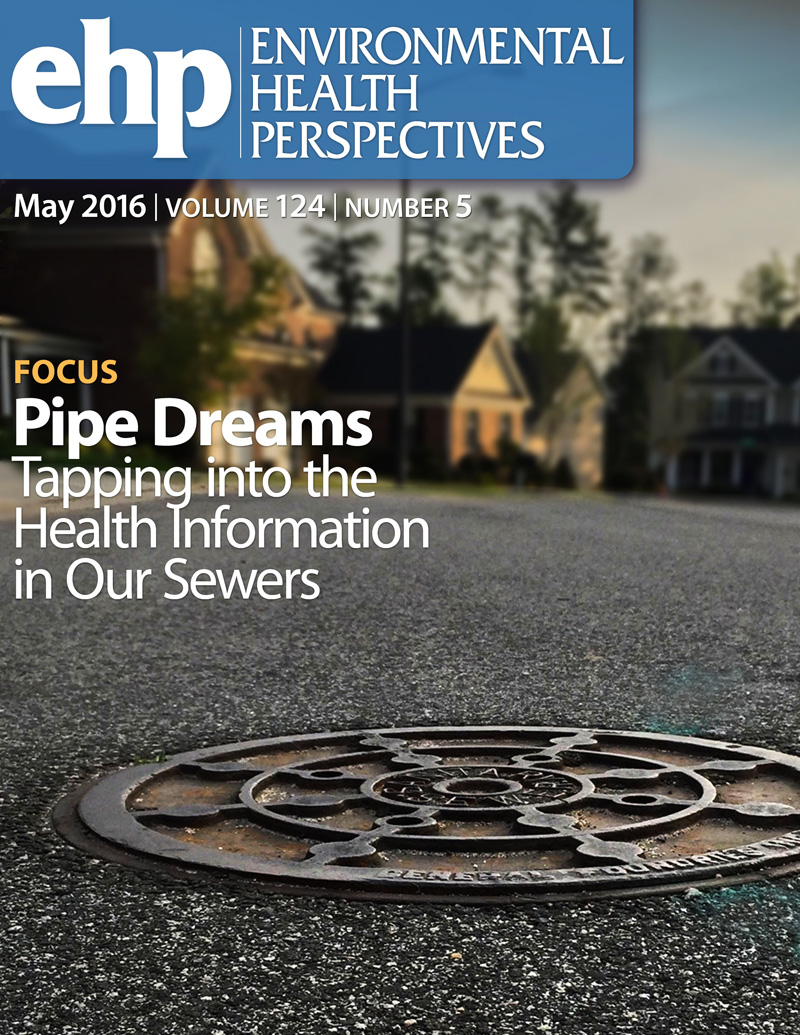燃烧木材的Justa炉灶对糖化血红蛋白(HbA1c)的影响:洪都拉斯农村的一项楔形随机试验
IF 9.8
1区 环境科学与生态学
Q1 ENVIRONMENTAL SCIENCES
引用次数: 0
摘要
背景2型糖尿病是低收入和中等收入国家(LMICs)快速增长的全球健康挑战,有证据表明空气污染暴露与此有关。燃烧固体燃料烹饪造成的家庭空气污染是中低收入国家的主要负担,但缺乏证明家庭空气污染减少与糖尿病风险生物标志物糖化血红蛋白(HbA1c)改善之间存在关联的研究。我们之前报道过,在洪都拉斯农村使用Justa炉灶(一种带有工程燃烧室和烟囱的燃木炉灶)进行干预后,细颗粒物(PM2.5)和黑碳浓度大幅降低。目的:在一项阶梯楔形随机对照试验中,我们评估了Justa干预对HbA1c的影响,并描述了空气污染暴露与HbA1c之间的纵向关联。方法在3年的时间里,我们每6次访问一次,测量24小时PM2.5和黑碳浓度,以及指棒式糖化血红蛋白水平。我们在意向治疗(按指定的炉子类型进行治疗)、暴露-反应(使用24小时测量和建模估计长期暴露)和“按协议”自我报告的炉子使用分析中使用了线性混合模型。结果与传统炉灶条件相比,Justa条件下的shba1c降低,但估计值较小且无统计学意义(-0.03个百分点,95%置信区间[CI]: -0.13, 0.07, n=1,208个观察值)。当在每个方案分析中使用自我报告的炉子使用情况时,观察到稍强的效果。暴露-反应分析表明,HbA1c与空气污染之间存在正相关(例如,HbA1c每增加对数单位,长期平均个人PM2.5增加0.22个百分点(95% CI: 0.13, 0.30))。我们的研究在一项随机炉灶试验中提供了家庭空气污染与HbA1c之间暴露-反应关联的新证据,为支持清洁烹饪政策倡议提供了必要的证据基础。https://doi.org/10.1289/EHP15095。本文章由计算机程序翻译,如有差异,请以英文原文为准。
Impact of the wood-burning Justa cookstove on glycated hemoglobin (HbA1c): a stepped-wedge randomized trial in rural Honduras.
BACKGROUND
Type 2 diabetes is a rapidly growing global health challenge in low- and middle-income countries (LMICs), and evidence suggests that air pollution exposure contributes. Household air pollution from burning solid fuels for cooking is a major burden in LMICs but studies demonstrating associations between reductions in household air pollution and improvements in HbA1c, a biomarker of diabetes risk, are lacking. We previously reported substantial reductions in fine particulate matter (PM2.5) and black carbon concentrations following an intervention in rural Honduras with the Justa cookstove, a wood-burning stove with an engineered combustion chamber and chimney.
OBJECTIVE
In a stepped-wedge randomized controlled trial among 230 Honduran women using traditional wood-burning stoves at baseline, we evaluated the effect of the Justa intervention on HbA1c and characterized the longitudinal associations between air pollution exposures and HbA1c.
METHODS
At each of 6 visits over 3 years, we measured 24-hour PM2.5 and black carbon concentrations, and finger-stick HbA1c levels. We used linear mixed models in intent-to-treat (condition by assigned stove type), exposure-response (using 24-hour measures and modeled estimates of long-term exposures), and "per protocol" self-reported stove use analyses.
RESULTS
HbA1c was reduced for the Justa condition compared to the traditional stove condition, but estimates were small and not statistically significant (-0.03 percentage points, 95% confidence interval [CI]: -0.13, 0.07, n=1,208 observations). A slightly stronger effect was observed when using self-reported stove use in per protocol analyses. Exposure-response analyses demonstrated positive associations between HbA1c and air pollution (e.g., HbA1c was 0.22 percentage points higher (95% CI: 0.13, 0.30) per log-unit higher long-term average personal PM2.5).
DISCUSSION
Our study provides novel evidence of exposure-response associations between household air pollution and HbA1c within a randomized cookstove trial, contributing to the evidence base necessary to support clean cooking policy initiatives. https://doi.org/10.1289/EHP15095.
求助全文
通过发布文献求助,成功后即可免费获取论文全文。
去求助
来源期刊

Environmental Health Perspectives
环境科学-公共卫生、环境卫生与职业卫生
CiteScore
14.40
自引率
2.90%
发文量
388
审稿时长
6 months
期刊介绍:
Environmental Health Perspectives (EHP) is a monthly peer-reviewed journal supported by the National Institute of Environmental Health Sciences, part of the National Institutes of Health under the U.S. Department of Health and Human Services. Its mission is to facilitate discussions on the connections between the environment and human health by publishing top-notch research and news. EHP ranks third in Public, Environmental, and Occupational Health, fourth in Toxicology, and fifth in Environmental Sciences.
 求助内容:
求助内容: 应助结果提醒方式:
应助结果提醒方式:


